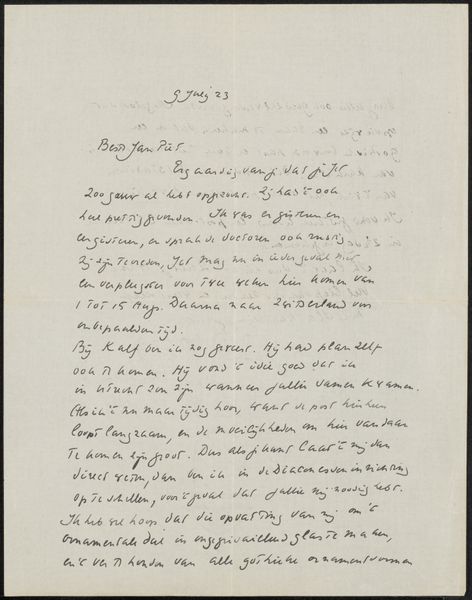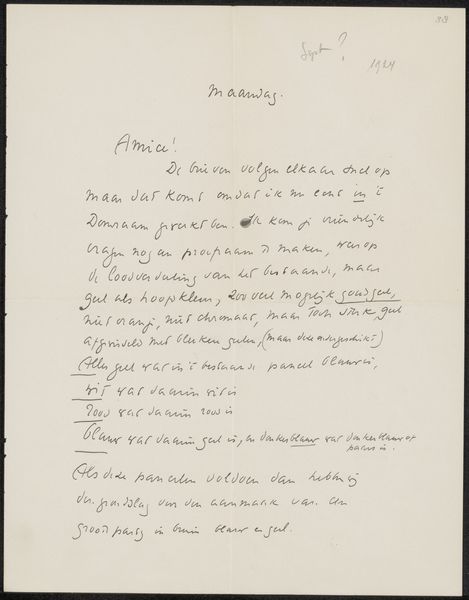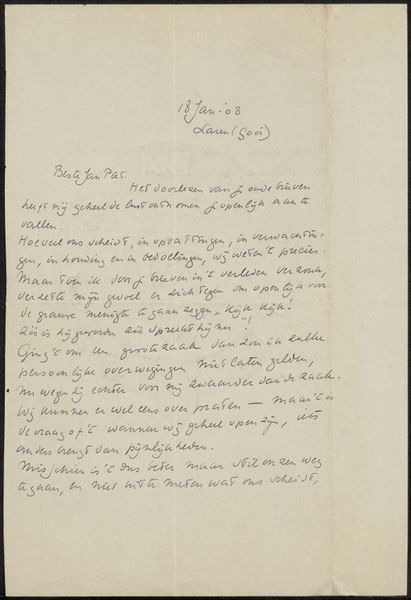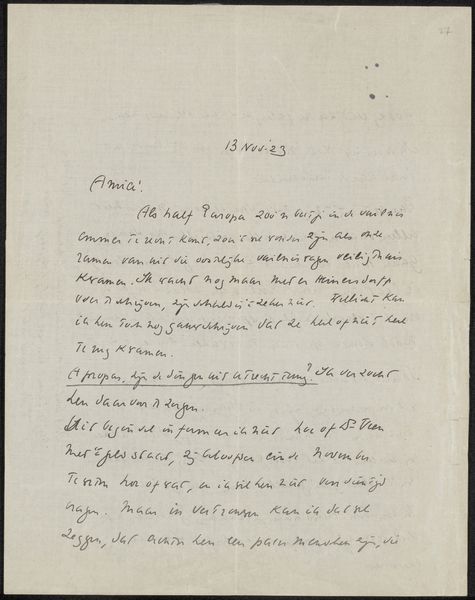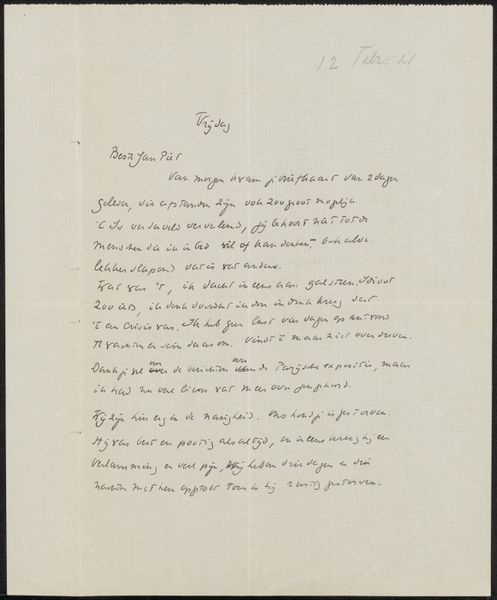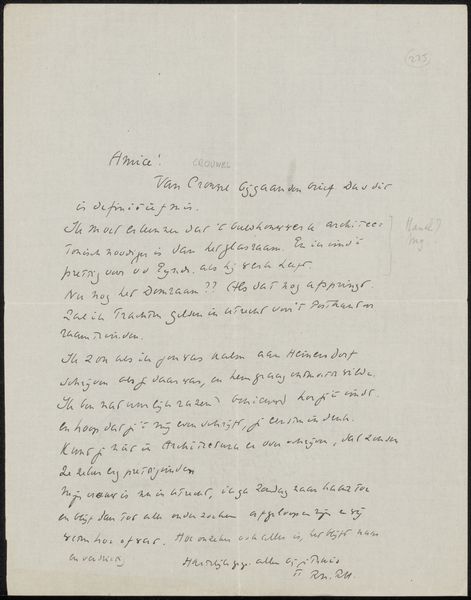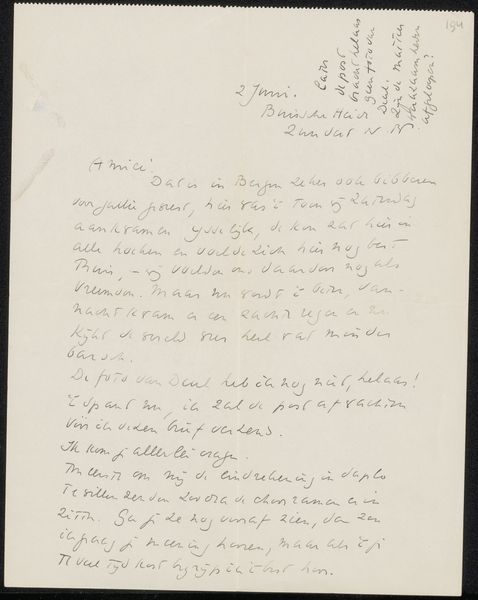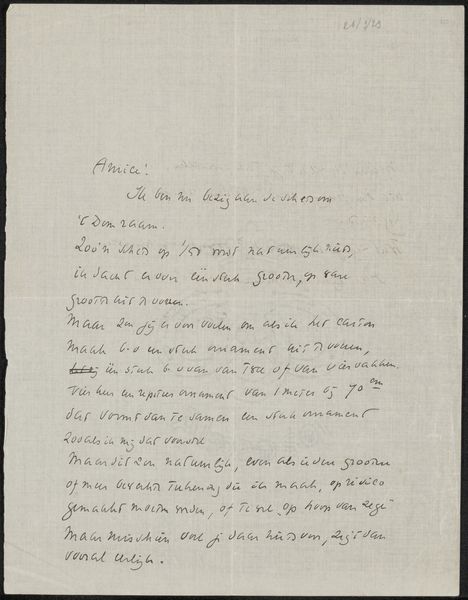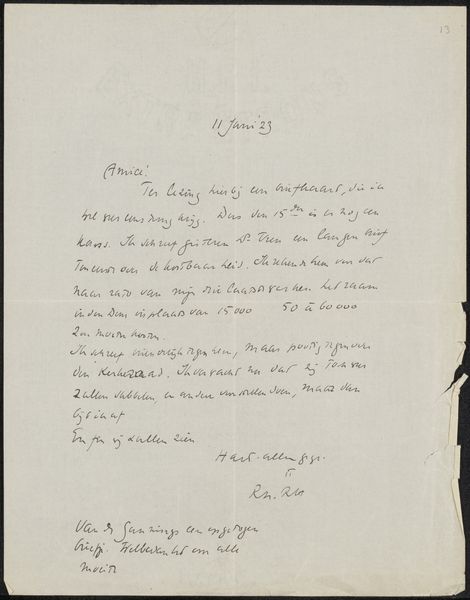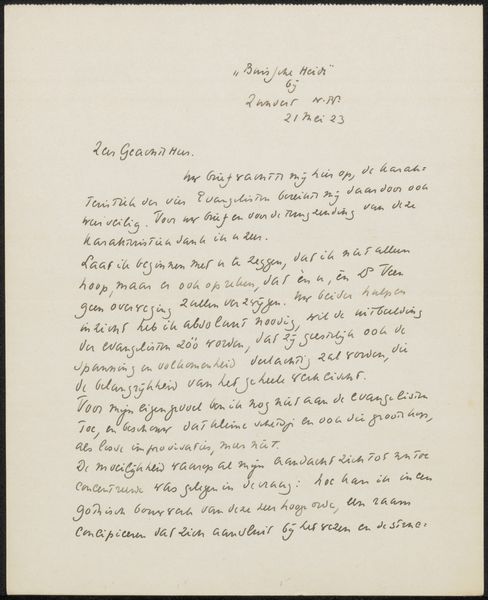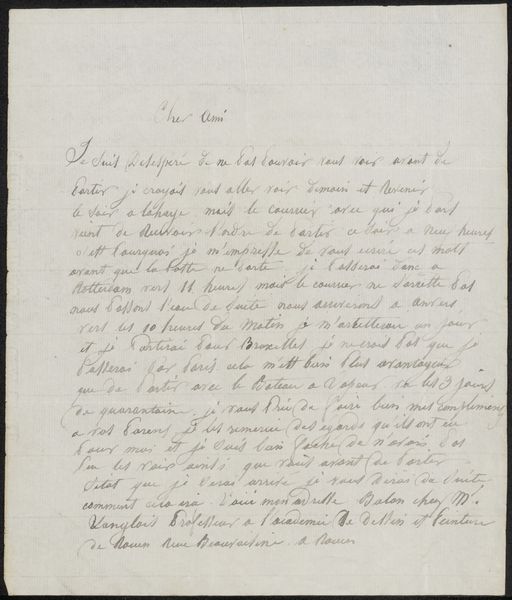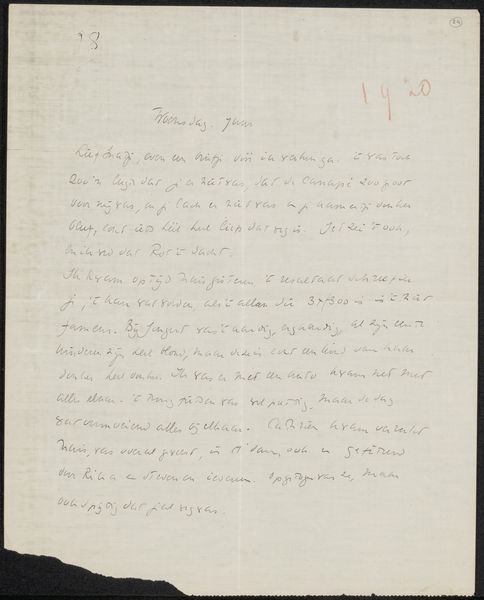
drawing, paper, ink
#
drawing
#
paper
#
ink
#
calligraphy
Copyright: Rijks Museum: Open Domain
Curator: Today, we're looking at a drawing called "Brief aan anoniem," or "Letter to Anonymous," made sometime between 1878 and 1938 by Richard Nicolaüs Roland Holst. It’s currently held at the Rijksmuseum. What are your first thoughts? Editor: Well, immediately, it’s the hand. It's like looking directly at someone’s private correspondence, so delicate, almost ghost-like on that thin paper. And it speaks to a whole culture of handwriting doesn’t it, laboring over penmanship with fine materials. Curator: Absolutely. Roland Holst was deeply involved in the socialist movement, and calligraphy and typography were areas where socialist ideals met art. Editor: How so? I'm picturing William Morris, his wallpaper designs… was it a similar idea? Curator: Precisely. Like Morris, he believed in bringing artistry to everyday life, but Holst focused specifically on the power of the written word. He understood the potential of good design in revolutionary tracts and documents and believed craftsmanship belonged in the service of society, not just in the service of luxury. Editor: So it wasn't simply about the aesthetic, but about empowering the message itself through careful labor and accessible production. Curator: Exactly. Holst wanted the form of the letter to complement the message contained within, aiming for clarity and a sense of dignity for both the writer and the reader. The ink and paper are also crucial; these humble materials carry profound social weight when used in this way. It’s the physical manifestation of thought, democratized. Editor: It really shifts your perception. Now the letter appears not as just communication, but as this object of careful production, speaking volumes about labor practices of the period. Curator: Indeed. Viewing "Brief aan anoniem" allows us a richer, layered view, combining aesthetic intent with socio-political considerations. Editor: Absolutely. Looking through the lens of material processes helps to appreciate the value inherent not only in this artifact but also within a period of burgeoning ideals.
Comments
No comments
Be the first to comment and join the conversation on the ultimate creative platform.

